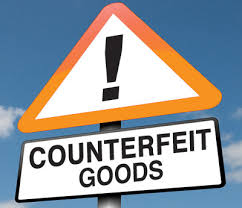Restrictive measures that were introduced in Russia during the period of the spread of COVID-19, as well as a sharp decline in household incomes, provoked an increase in the turnover of counterfeit and illegal products.
"The income of the population is falling, the demand for less expensive goods, with a high probability for counterfeit products, is growing, which means that illegal production and illegal distribution channels for these products satisfy this demand," said Sergei Belyakov, Chairman of the Presidium of the Association of Retail Companies (ACORT).
As noted in ACORT, the factors contributing to the growth of shadow business during the period of self-isolation, including the serious costs and restrictions incurred by bona fide trading companies that comply with the regulations to combat the spread of coronavirus. Restrictions on the movement of the population and the work of trade enterprises selling non-essential goods also became such factors. "At the same time, illegal trade does not incur such costs, ignores the restrictions and regulations of the Russian Federal Service for Surveillance on Consumer Rights Protection and Human Wellbeing (Rospotrebnadzor). This opens up and significantly facilitates access to the market for counterfeit and unsafe goods, and gives additional preferences to illegal trade," ACORT said.
As Belyakov noted during the Retail Week 2020, the share of counterfeit goods is high and growing in key product groups, which are usually called socially sensitive. According to him, already now experts estimate possible losses from the counterfeit market for the world economy at 3% of world GDP. According to Rospotrebnadzor and Rosstat, the turnover of non-food counterfeit products in Russia alone amounted to RUR 5.2 trillion ($ 68.17 billion) last year. And the volume of VAT not received by the budget per year exceeds RUR 500 billion ($ 6.55 billion).
The main sources of counterfeit products are wholesale and retail markets, points of sale in malls and brick-and-mortar stores, social networks and online stores, which significantly increased turnover during the period of self-isolation. At the same time, the volume of illegal traffic differs depending on the category of goods sold. The most counterfeit goods are toys for children (about 35%), clothes and shoes (29%), consumer electronics and accessories, including smartphones, chargers, cases (17.5%), batteries (15%), household chemicals (12.5%) and perfumery (10%), alcohol (up to 40%), tobacco (over 15%), dairy products (17%), mineral water (up to 25%)," Belyakov noted at the conference. The share of counterfeit products in online trade is estimated from 5% to 30%.
Source: sweetinfo.ru.


